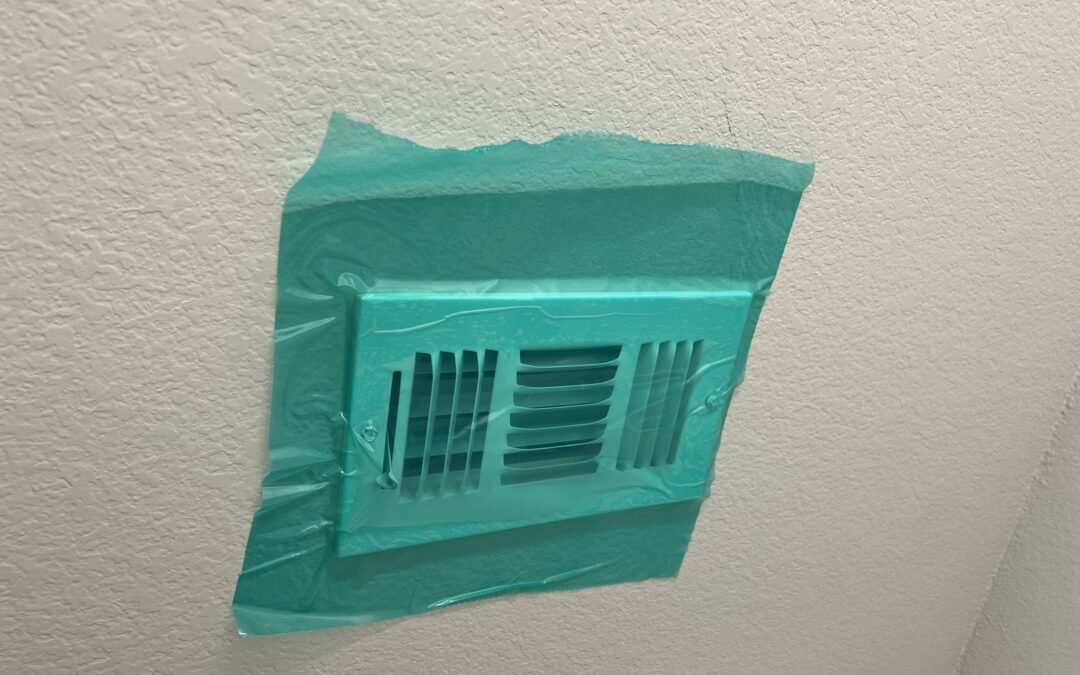This photo is a taped distribution register grill. This was taped for pressure testing of the duct system to determine its leakage rate which should be below 4%. This is accomplished by taping the registers and returns and using a testing blower which will depressurize the duct to 25 Pa and provide the flow rater required to maintain the pressure. Duct leakage can be a serious problem in residential construction and we sometimes order pressure testing to be conducted when there is concern that duct leakage may be causing indoor air quality problems. Duct leakage outside the thermal envelope of the building can result in infiltration air that during the summer months can lead to mold and water damage where it enters the building as hot humid air entering the building condenses moisture to surfaces in the cool interior environment. This can occur because leaks in the air conditioning system in the attic or other spaces outside the building envelope essentially pump air out of the building which results in a drop in pressure in the building causing air to enter wherever it can to make up for the loss. To prevent this code requires ventilation air to compensate for leakage and requires sealing of the building envelope including penetrations for the air conditioning ducts where they enter the conditioned space. Testing the building and duct for leakage is performed by using blowers to pressurize the building and the ductwork and measuring the air loss under pressure. This testing is required at the time of construction and is often a protocol to diagnose the cause for an infiltration problem which often is related to the air conditioning system. If you are interested in your building’s performance, you can request testing documents for new construction. Unfortunately, you may not receive them. Testing can also be provided by an energy audit provider specializing in envelope testing. Although they can be useful in both confirming quality of construction and diagnosing future concern or problems many builders are reluctant to provide the testing results for code required testing opting to provide clients with a simple pass/fail sticker.
713-664-1264


Recent Comments